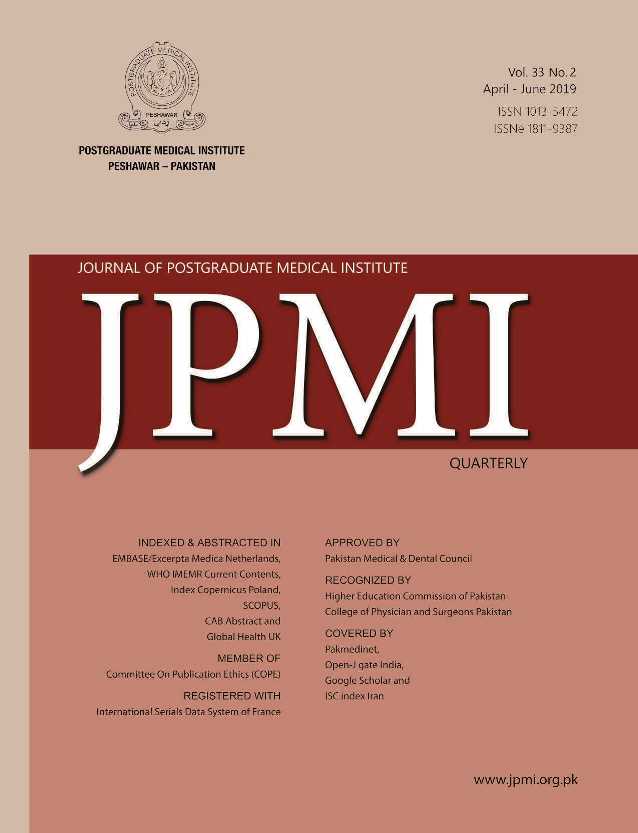INCONTINENCE OF URINE IN PREGNANT WOMEN
Main Article Content
Abstract
Objective: To determine the frequency and types of urinary incontinence in pregnant women reporting to a tertiary care hospital.
Methodology: This descriptive study was carried out in the Department of Obstetrics and Gynaecolgy "˜B' Unit, Hayatabad Medical Complex, from September 2017 to February 2018. All the pregnant women who had urinary incontinence were selected for the study by non-probability convenient sampling after taking informed consent. These patients were then sub-classified into either urge, stress or mixed urinary incontinence. Detailed history regarding their period of gestation, risk factors for incontinence, type of incontinence and gestational age at presentation of urinary incontinence were recorded. Data were analyzed using SPSS version 21.
Results: In our study, total 2880 antenatal women were interviewed; out of which 317 were having urinary incontinence making the frequency of urinary incontinence to be 11%. Maternal age ranged from 18-42 years with mean age of 28.04 ±2.3 years. Most of the patients presented in the last trimester followed by 2nd and 1st trimester respectively. Mixed urinary incontinence was the most common type of incontinence (n=133, 41.95%), followed by urge urinary incontinence (n=108, 34%) and stress urinary incontinence (n=76, 24%).
Conclusion: Incontinence of urine was a significant problem during pregnancy. Mixed urinary incontinence was the most common type of incontinence of urine.
Article Details
Work published in JPMI is licensed under a
Creative Commons Attribution-NonCommercial 2.0 Generic License.
Authors are permitted and encouraged to post their work online (e.g., in institutional repositories or on their website) prior to and during the submission process, as it can lead to productive exchanges, as well as earlier and greater citation of published work.


